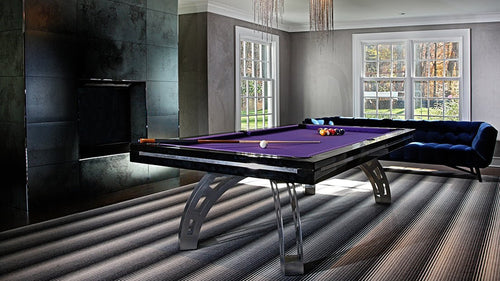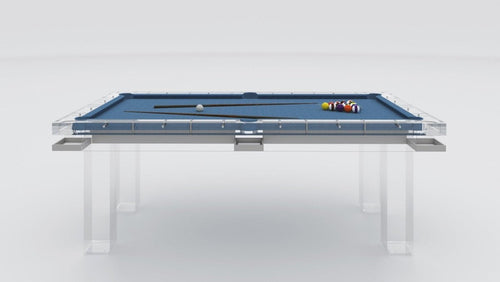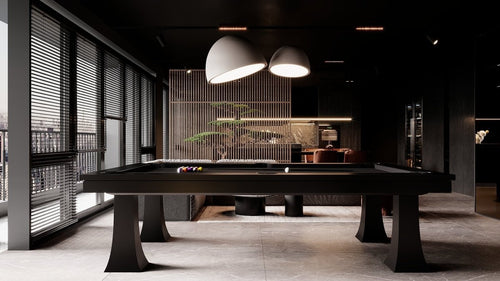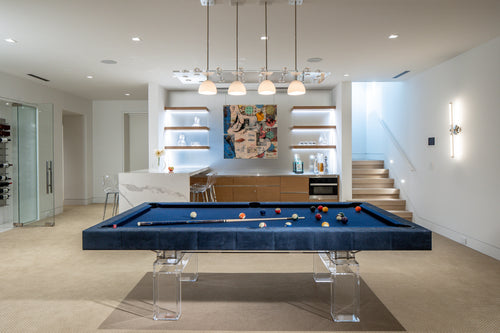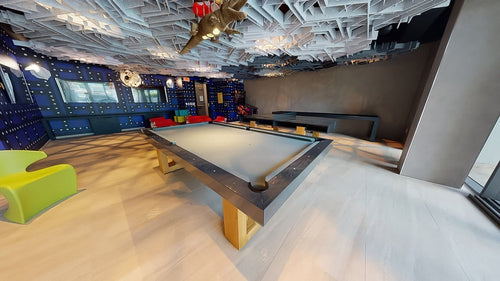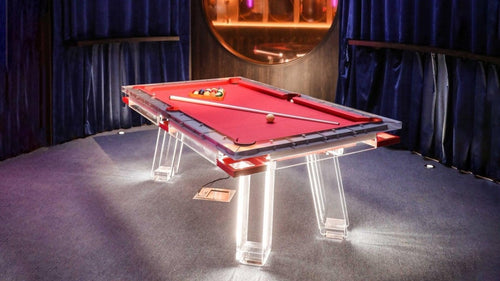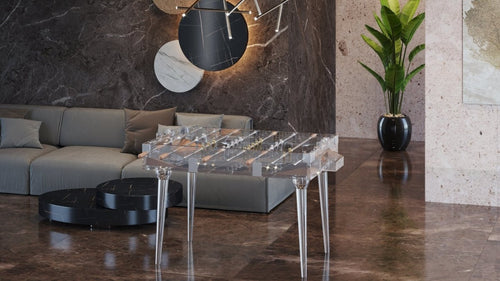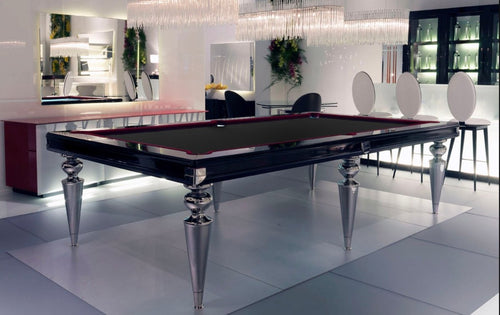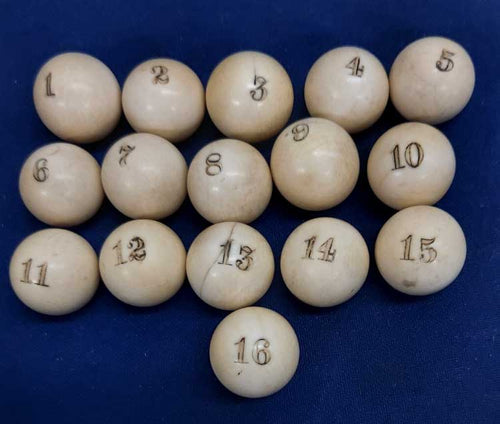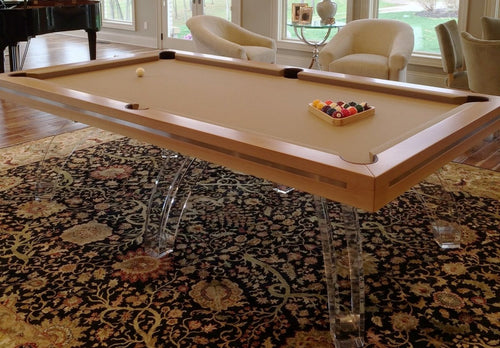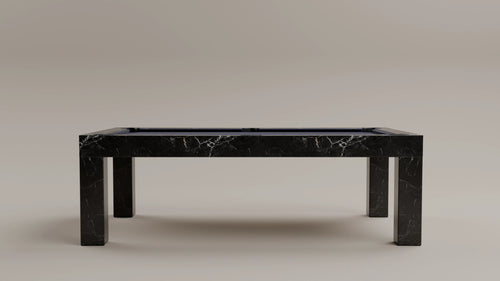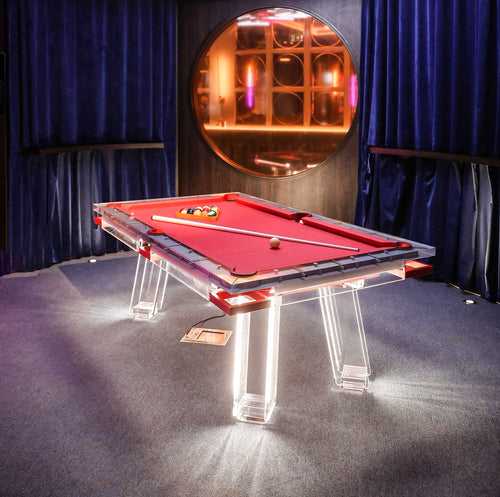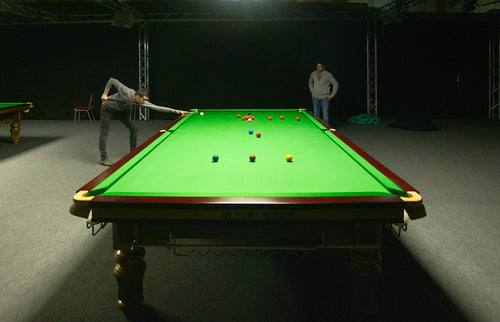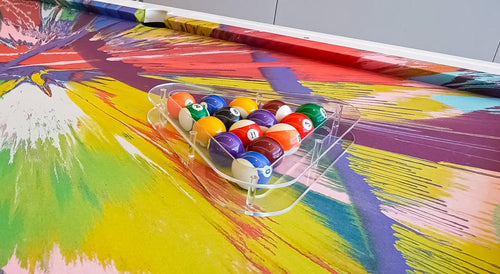Enjoy our modern designs
If you've ever heard someone refer to "billiards" when they really meant "pool," or vice versa, you're not alone. The confusion between these two terms is common, and it often stems from their shared origins and overlapping equipment. However, there are distinct differences that set each apart, and understanding these differences can deepen your appreciation for both games. Let’s dive into the origins, definitions, and nuances of billiards and pool to clear up the confusion.
The Origins: Where It All Began
Billiards is an umbrella term that encompasses a broad category of cue sports, with a history dating back to the 15th century. Originally, billiards evolved from lawn games—similar to croquet—played in Europe. Over time, these outdoor games were moved indoors and played on tables covered with green felt to resemble grass. This transformation led to the creation of early billiard games, where players used wooden cues to strike balls on tables without pockets. Learn more about the history of pool on our blog.
Pool, on the other hand, came into the spotlight much later, during the 19th century. The game gained popularity in American pool halls, where people would gather not just to play but also to bet on games. In fact, the word "pool" originally referred to the collective betting on multiple games. Over time, the term became synonymous with the pocket billiards games we know today, such as Eight-Ball, Nine-Ball, and Straight Pool. To delve deeper into the history of gambling and pool, here is another blog!
What Is Billiards?

In a strict sense, "billiards" typically refers to carom billiards, which is played on a table without pockets. Carom billiards tables are larger, usually around 10 feet by 5 feet, and the gameplay involves using three balls—two cue balls and one red object ball. The goal is to score points by caroming (bouncing) your cue ball off the other two balls on the table. This variant of billiards is particularly popular in Asia, where it enjoys a dedicated following and a strong competitive scene.
The design of a billiard table is unique in several ways:
No Pockets: Since the game focuses on caroms rather than pocketing balls, the table is pocketless.Cloth Type: The playing surface is covered with a thicker, slower cloth to emphasize precision and control.
Skill Focus: The game requires mastery over angles, strategic planning, and careful control of ball speed.
What Is Pool?

Pool, often called "pocket billiards," is what most people think of when they hear the term "billiards" today. Pool tables are smaller compared to billiard tables, commonly available in 7-foot, 8-foot, and 9-foot sizes. These tables have six pockets: four at the corners and two in the middle of each long side. The goal of pool games generally involves pocketing balls in a specific sequence or pattern before your opponent does.
Here are some key features of pool tables:
Pockets: Pool tables have six pockets, making pocketing the main objective of the game.Cloth Type: The cloth on a pool table is smoother and faster, allowing for more dynamic gameplay and faster ball movement.
Game Variations: There are many variations of pool, such as Eight-Ball, Nine-Ball, and Straight Pool, each with different rules and challenges.
Why the Terms Billiards and Pool Are Often Interchanged
The primary reason for the interchangeable use of "billiard" and "pool" lies in their shared history. Initially, "billiards" was the only name in town, covering all games played with a cue and balls. As cue sports evolved, new variations like pool emerged, yet people continued to refer to them as forms of billiards. This overlap in terminology became embedded in the culture, especially in the United States, where "pool" and "billiards" are often used to refer to the same thing.
Adding to the confusion is the fact that some pool halls and bars label their pool tables as "billiard tables," further muddying the waters. This is mainly because, in many countries, the word "billiards" is still used as a general term for all cue sports, including pool, snooker, and carom billiards.
Key Differences Summarized
To help you clearly distinguish between billiards and pool, here are the main differences:
Table Design: Billiard tables have no pockets, while pool tables have six pockets.Game Focus: Billiards focuses on carom shots (hitting balls off each other), whereas pool revolves around pocketing balls.
Table Size: Billiard tables are generally larger, usually around 10 feet, compared to the 7-9 feet sizes of pool tables.
Cloth Type: Billiard tables use a thicker cloth for controlled play, while pool tables have a smoother cloth for fast play.
Conclusion: Clarifying Why Billiards Are Often Called Pool
Though "billiard" and "pool" are often used interchangeably, they are distinct in both their history and gameplay. Billiards is about precision, angles, and strategy on a pocketless table, while pool is a more dynamic, pocket-based game that offers a variety of play styles. Understanding these differences not only helps clarify terminology but also allows you to appreciate the rich heritage and unique qualities each game brings to the table. Whether you are drawn to the finesse of carom billiards or the excitement of pocketing balls in pool, both games offer a rewarding experience for players of all skill levels.



